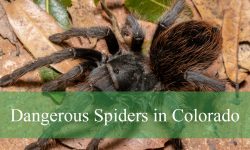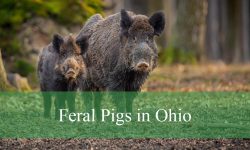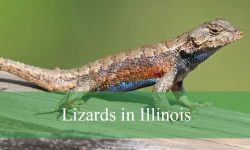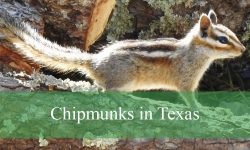Rarely do visitors to Wisconsin notice them at first glance, yet black squirrels quietly thrive across the state’s forests, parks, and urban areas. These striking rodents are not a separate species but a melanistic variant of the eastern gray squirrel (Sciurus carolinensis). Their dark fur is more than just a visual curiosity—it reflects adaptations that help them survive in Wisconsin’s variable climate and diverse ecosystems. Observing their behavior offers a fascinating glimpse into the strategies these animals use to find food, avoid predators, and navigate both rural and urban environments.
Understanding black squirrels in Wisconsin involves exploring not only their unique appearance but also their behaviors, habitats, seasonal habits, and interactions with humans. These factors together explain why this melanistic population is both resilient and intriguing.
Origins and Biological Characteristics
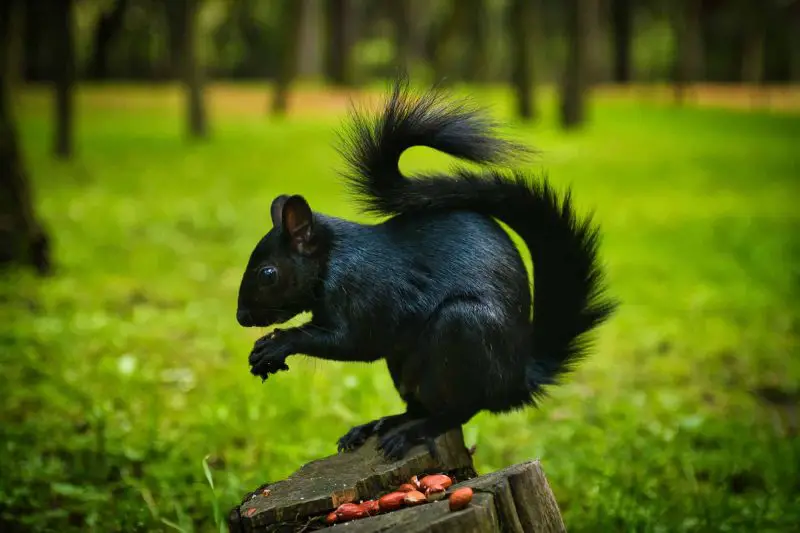
Black squirrels are the result of a genetic mutation that increases melanin production, giving their fur a deep black color. This mutation occurs at the melanocortin 1 receptor (MC1R) gene, which controls pigmentation. While their coloration is unusual, the animals share nearly all other traits with typical gray squirrels, including body size, diet, and reproductive behaviors. Adults typically measure 18 to 20 inches from nose to tail and weigh between 14 and 21 ounces, with bushy tails that help maintain balance and body heat.
The melanistic trait may offer certain advantages, such as better heat absorption during cold Wisconsin winters. Some researchers suggest that black squirrels may be more resilient in shaded forest habitats, blending with darker tree trunks and shadows to avoid predators. Their keen eyesight, agility, and strong sense of smell also contribute to their survival across the state.
In addition to physical traits, black squirrels exhibit remarkable cognitive skills. Observational studies have shown that they can remember multiple food cache locations across considerable distances. This spatial memory is critical in Wisconsin’s seasonal climate, where winters can be long and food scarce. Scientists have also noted that these squirrels adapt their foraging routes based on environmental changes, demonstrating problem-solving abilities comparable to other highly intelligent rodents.
Habitat Preferences in Wisconsin
Black squirrels are highly adaptable and occupy a variety of habitats in Wisconsin. They are commonly found in deciduous and mixed forests, particularly areas with abundant oak, hickory, and maple trees, which provide ample food in the form of nuts and seeds. Urban parks, suburban yards, and even college campuses have become suitable habitats, as these areas offer both food and protection from natural predators.
Urban settings reveal the species’ behavioral flexibility. In cities like Madison and Milwaukee, black squirrels often explore playgrounds, public gardens, and university grounds. While they may utilize human-provided food sources, they still maintain vigilance, quickly retreating at sudden movements or loud noises. Their ability to coexist alongside humans without significant stress demonstrates the species’ remarkable adaptability.
In more rural areas, black squirrels prefer mature forests where canopy cover and fallen leaves provide both shelter and camouflage. They construct elaborate dreys in tree forks, often lined with moss, leaves, and other soft materials to insulate against Wisconsin’s winter temperatures. These nests not only protect against cold but also provide refuge from predators like hawks, owls, and foxes. Additionally, black squirrels frequently move between multiple dreys, a behavior that reduces the risk of predation and allows them to forage efficiently in larger territories.
Behavior and Social Dynamics
Black squirrels in Wisconsin display a wide range of behaviors that reveal their intelligence and social complexity. They are primarily diurnal, most active during early mornings and late afternoons. Their diet is highly varied, consisting of nuts, seeds, fruits, fungi, and occasionally bird eggs or insects. They are especially known for their food caching behavior, hiding nuts in multiple locations for later retrieval. Forgotten caches sometimes germinate into new trees, making black squirrels inadvertent contributors to forest regeneration.
Socially, black squirrels are somewhat solitary outside the breeding season but engage in sophisticated interactions when territories overlap. They communicate through vocalizations, tail flicks, and physical displays such as chasing or mock fights to assert dominance. During the mating season, males compete for females with impressive acrobatics, demonstrating agility and stamina. Females usually give birth to two to four kits per litter, which remain in the nest for about ten weeks before venturing independently into their surroundings.
Behavioral observations in Wisconsin have also highlighted individual variation. Some black squirrels appear bolder and more willing to forage in open spaces, while others remain cautious and rely on forested cover. These behavioral differences likely increase population resilience, allowing the species to thrive in both urban and rural environments simultaneously.
Seasonal Adaptations
Seasonal changes in Wisconsin profoundly influence black squirrel behavior. Winter brings long periods of cold and snow, during which squirrels rely heavily on cached food. Their dark fur absorbs more heat from sunlight, offering a slight thermal advantage. During extreme weather, they may huddle together in dreys or retreat to tree cavities to conserve warmth.
Spring and summer are periods of increased activity. Black squirrels focus on foraging, mating, and raising their young. Young squirrels learn essential survival skills by observing parents, including how to identify food sources and recognize predators. Fall is crucial for food caching; squirrels intensively gather nuts, acorns, and seeds to prepare for the long winter ahead. This period also influences local tree regeneration, as some hidden nuts eventually germinate.
In urban environments, seasonal behavior can differ slightly. Black squirrels may become more visible during winter in parks and residential areas, drawn by human-provided food sources. Conversely, in densely forested regions, they remain cautious and limit activity to quieter times of the day. These adaptive strategies highlight their capacity to respond to both environmental and human-induced changes.
Interaction with Humans
Black squirrels have become a charming presence in Wisconsin communities, often admired for their striking coloration. In parks and suburban neighborhoods, residents enjoy watching their acrobatics and observing their foraging habits. However, interactions with humans require mindfulness. Feeding squirrels excessively can disrupt natural behaviors, lead to dependency, or cause health problems. Maintaining a respectful distance ensures that these animals remain wild and independent.
Educational programs across Wisconsin have highlighted black squirrels as a living example of wildlife adaptation. Schools and wildlife organizations use them to teach principles of genetics, ecology, and urban wildlife behavior. Their presence demonstrates how animals can adjust to human activity while maintaining essential survival strategies.
Conservation and Population Trends
Black squirrels are not currently endangered, but their populations are influenced by habitat quality, food availability, and predation pressure. In some urban areas, melanistic squirrels dominate local populations, while in forested regions, gray variants are more prevalent. Monitoring their population dynamics provides insight into urban ecology, forest health, and genetic diversity.
Conservation efforts focus on preserving mature forests, maintaining tree diversity, and minimizing human-wildlife conflicts. By protecting their habitats and promoting awareness, Wisconsin ensures that black squirrels continue to thrive. Research into the genetic basis of melanism also helps scientists understand how adaptive traits spread within populations and the evolutionary advantages these traits may provide.
Observing Black Squirrels in Wisconsin
The best times to observe black squirrels are during early morning or late afternoon. Ideal locations include state parks, wooded neighborhoods, and university campuses with mature trees. Observers are advised to move quietly and remain patient, as squirrels are naturally alert and quick to retreat. Using binoculars or cameras enhances the viewing experience without disturbing their natural behavior.
Seasonal factors affect visibility. In winter, their black fur contrasts vividly with snow, making sightings easier. In summer and fall, dense foliage can make spotting them more challenging. Knowledge of local habitats and behavioral patterns increases the likelihood of successful observation. Documenting their activity, social interactions, and feeding habits provides valuable insight for both casual enthusiasts and professional researchers.
Fun Facts About Black Squirrels
Black squirrels exhibit remarkable intelligence and adaptability. They navigate complex urban landscapes, remember multiple food cache locations, and interpret subtle social cues. Their dark fur may offer a slight advantage in thermoregulation during winter months. In some Wisconsin communities, black squirrels have inspired local folklore and even symbolic significance, celebrated for their resilience and cleverness.
Beyond aesthetics, these squirrels play an important ecological role. By burying nuts and seeds, they contribute to forest regeneration. Observing their behavior provides a window into ecological processes, from predator-prey dynamics to plant-animal interactions, illustrating the interconnectedness of wildlife and environment.
Conclusion
The unique behavior and habitat of black squirrels in Wisconsin tell a story of resilience, intelligence, and adaptation. From their melanistic genetics to flexible foraging strategies and complex social interactions, these animals demonstrate how wildlife can thrive in both natural and human-altered environments. Observing black squirrels offers not only enjoyment but also lessons about ecology, urban adaptation, and the importance of preserving diverse habitats.
By respecting their natural behaviors and habitats, residents and visitors can enjoy these fascinating creatures while supporting conservation efforts. Black squirrels are more than a striking variation of a familiar species—they are living evidence of adaptability, survival, and the enduring connection between wildlife and humans in Wisconsin.
FAQs About Black Squirrels in Wisconsin
What Are Black Squirrels?
Black squirrels are a melanistic variant of the eastern gray squirrel (Sciurus carolinensis). Their dark fur results from a genetic mutation that increases melanin production. Apart from their striking coloration, they share the same size, diet, and behaviors as typical gray squirrels.
Are Black Squirrels a Separate Species?
No, black squirrels are not a separate species. They are a color variation of the eastern gray squirrel. The melanistic trait occurs naturally and can be found in different populations across North America, including Wisconsin.
Where Can I See Black Squirrels in Wisconsin?
Black squirrels are adaptable and can be seen in forests, urban parks, college campuses, and suburban areas with mature trees. Popular locations include Madison’s parks, Milwaukee’s wooded neighborhoods, and green spaces across the state where food and tree cover are abundant.
What Do Black Squirrels Eat?
Their diet includes nuts, seeds, fruits, fungi, and occasionally bird eggs or insects. They are known for caching food in multiple locations to ensure survival during the winter. Forgotten caches often help with forest regeneration.
Are Black Squirrels Aggressive?
Black squirrels are generally not aggressive. They are cautious and alert, especially around humans or potential predators. During mating season, males may display competitive behaviors, but these interactions are limited to establishing dominance or securing mates.
How Do Black Squirrels Adapt to Wisconsin’s Climate?
Black squirrels thrive in Wisconsin’s cold winters thanks to their thick fur, which provides insulation. Their melanistic coloration may offer slight heat absorption advantages. Seasonal behaviors, such as caching food in the fall and huddling in dreys during winter, help them survive harsh conditions.
Do Black Squirrels Interact Well with Humans?
Yes, black squirrels can coexist with humans, especially in urban and suburban areas. While they may approach human-provided food sources, it’s important not to overfeed them. Observing from a distance allows them to remain wild and independent.
How Can I Tell a Black Squirrel from a Gray Squirrel?
The easiest way is by their fur color. Black squirrels have deep black or very dark brown coats, whereas gray squirrels have lighter gray fur with white undersides. Despite the color difference, their size and body shape are very similar.
Why Are Black Squirrels Important to the Ecosystem?
Black squirrels contribute to forest health by dispersing seeds and nuts, which can germinate into new trees. They also serve as prey for predators like hawks and owls, playing an important role in the food chain.
When Is the Best Time to Observe Black Squirrels?
Early morning and late afternoon are ideal, as black squirrels are most active during these times. Seasonal changes affect visibility, with winter providing greater contrast against snow and summer foliage sometimes making them harder to spot.

